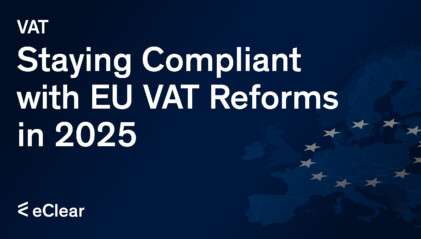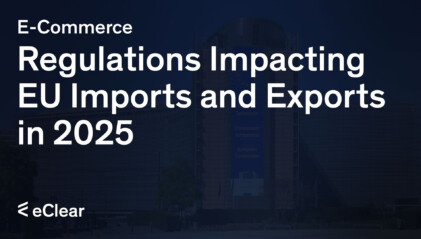The EU is an important sales market for online retailers from all over the world. China, the USA, and the UK are frontrunners regarding B2C e-commerce in the EU. The global pandemic has driven up sales figures via online channels and permanently changed consumer buying habits. Previously, the rule was that VAT only had to be paid on imports from a third country into the EU if the material value of the goods exceeded EUR 22. But merchants based in the EU always had to pay VAT, regardless of the value of the delivered goods. The EU reacted by changing the laws to create a level playing field.
Legal changes due to the EU VAT digital package
Since the EU VAT digital package came into force on July 1, 2021, every shipment from a third country to the European Union must be electronically declared to customs. The former EUR 22 tax-free limit has been abolished, and all imported goods must now be taxed. Whereas smartphones were previously disguised as pacifiers to avoid paying import VAT, the correct tax rate of the destination country must be applied directly.
The new rules also change things for major platform operators like Amazon and Alibaba. This is because, under VAT law, they now supply the consumer directly, not the retailer registered on the platform. This means they become liable for the tax and must pay it correctly to the competent national tax authority, for example, the Federal Central Tax Office in Germany.
The EU and the diversity of its tax rates
Applying the correct EU tax rates can challenge online merchants from third countries and platform operators. This is because the EU has 27 Member States, each with its own tax rates. There is usually at least one standard rate, and one reduced VAT rate; this is 19% and 7% in Germany. Furthermore, special regulations may apply, or certain items may be exempt from VAT. There can also be geographical differences. For example, although the Azores belong to Portugal, the VAT rates differ: Portugal 23%, Azores 18%.
The EU VAT Rates Database is incomplete
This is difficult for online merchants, especially those from third countries. Although the EU provides a tax database known as the EU VAT Rates Database, the information is incomplete and sometimes incorrect. According to a previous eClear report and a statement from eClear AG CEO and Chairman of the Board Roman Maria Koidl: “The database contains obvious omissions. This is a competitive disadvantage for e-commerce merchants relying on the information’s accuracy. It also annoys customers who have to deal with incorrectly calculated VAT.” And if there is a problem, the EU is not liable.
„The database contains apparent omissions. This is a competitive disadvantage for e-commerce merchants relying on the information’s accuracy. It also annoys customers who have to deal with incorrectly calculated VAT.“
In addition to annoying customers, incorrectly calculated prices can result in lost sales revenues for merchants when, for example, too much VAT is paid to the tax authorities. During the ongoing Corona pandemic, the VAT rate in Germany was temporarily reduced from 19% to 16%. But online retailers couldn’t see this in the EU VAT Rate Database – which was a disadvantage.
eClear supports with its tax database VATRules
The eClear VATRules tax database offers merchants over 1 million current tax codes with approx. There are three hundred thousand exceptions for the EU 27 and the UK. All VAT rates and rules, updates and temporary changes are automatically considered. These rates are assigned and applied to the merchant’s product groups. Fully automated, the continuously updated tax rates are provided on demand, embedded in the order processes, and applied. Automating the application of tax rates significantly reduces the need for manual corrections.
The solution for sales of goods to the EU over 150 euros
As a registration-free customs solution for goods valued at EUR 150 or more, eClear offers its full-service ClearCustoms that automates customs declarations in all EU 27 countries. This enables online merchants to sell their goods cross-border to other countries DDP (Delivered Duty Paid) without customs formalities and risks. All the merchant’s products are calculated with eClear VATRules and CustomsTariffs database to ensure the correct customs declaration, including payment of import duties and taxes. For the buyer, the landed costs (purchase price + customs duty, taxes, and fees) are visible in real-time during the check-out process. Payment processing is handled automatically by the integrated payment module.







